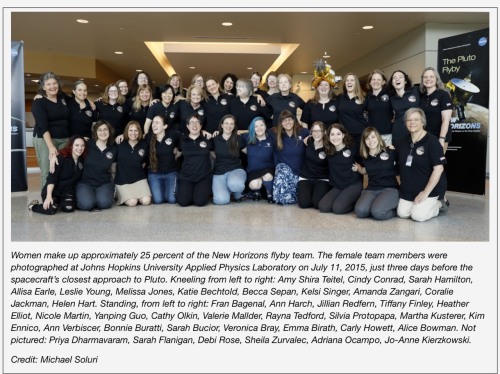“There Is Something At The Bottom Of Every New Human Thought, Every Thought Of Genius, Or Even Every
“There is something at the bottom of every new human thought, every thought of genius, or even every earnest thought that springs up in any brain, which can never be communicated to others, even if one were to write volumes about it and were explaining one’s idea for thirty-five years; there’s something left which cannot be induced to emerge from your brain, and remains with you forever…”
— Fyodor Dostoyevsky, The Idiot
More Posts from Prasannachoudhary and Others



Women scientists made up 25% of the Pluto fly-by New Horizon team. Make sure you share this, because erasing women’s achievements in science and history is a tradition. Happens every day. http://pluto.jhuapl.edu/News-Center/News-Article.php?page=20150712

Helen Levitt, Children with Soap Bubbles, New York City, c. 1945
From the Metropolitan Museum of Art:
Helen Levitt’s photographs of everyday life in her own New York neighborhood have epitomized domestic urban life for over sixty years. This image of children - one of her most common subjects - demonstrates Levitt’s astute portrayal of gesture, praised as “lyrical” by James Agee in the introduction to her book, A Way of Seeing. As the viewer’s attention echoes the children’s glance toward the left of the scene, the picture poses a riddle as to the bubbles’ source, transforming this gritty city street into a magical metropolitan playground.
Quantified Life: An Interview with Sun-Ha Hong








Miriam Makeba interview, 1969
Miriam Makeba (4 March 1932 – 10 November 2008), nicknamed Mama Africa, was a Grammy Award winning South African singer and civil rights activist. She actively campaigned against the South African system of apartheid. As a result, the South African government revoked her citizenship and right of return. After the end of apartheid she returned home.

Alfred Wertheimer’s never-before-seen photos of Elvis when he was a 21-year-old up-and-coming crooner.
Many highly creative people [display] personal behavior [that] sometimes strikes others as odd. Albert Einstein picked up cigarette butts off the street to get tobacco for his pipe; Howard Hughes spent entire days on a chair in the middle of the supposedly germ-free zone of his Beverly Hills Hotel suite; the composer Robert Schumann believed that his musical compositions were dictated to him by Beethoven and other deceased luminaries from their tombs; and Charles Dickens is said to have fended off imaginary urchins with his umbrella as he walked the streets of London. […] In fact, creativity and eccentricity often go hand in hand, and researchers now believe that both traits may be a result of how the brain filters incoming information. Even in the business world, there is a growing appreciation of the link between creative thinking and unconventional behavior, with increased acceptance of the latter. … In the past few decades psychologists and other scientists have explored the connection using empirically validated measures of both creativity and eccentricity. [The latter is measured] using scales that assess schizotypal personality … which is among a cluster of personality disorders labeled ‘odd or eccentric’ in the American Psychiatric Association’s Diagnostic and Statistical Manual of Mental Disorders. […] A brain-imaging study, done in 2010 by investigators at the Karolinska Institute in Stockholm, suggests the propensity for both creative insights and schizotypal experiences may result from a specific configuration of neurotransmitter receptors in the brain. Using positron-emission tomography, Örjan de Manzano, Fredrik Ullén and their colleagues examined the density of dopamine D2 receptors in the subcortical region of the thalamus in 14 subjects who were tested for divergent-thinking skills. The results indicate that thalamic D2 receptor densities are diminished in subjects with high divergent-thinking abilities, similar to patterns found in schizophrenic subjects in previous studies. The researchers believe that reduced dopamine binding in the thalamus, found in both creative and schizophrenic subjects, may decrease cognitive filtering and allow more information into conscious awareness.
Fascinating Scientific American article on why creative people tend to be eccentric. For real-life case studies, look no further than the odd habits and eccentric behaviors of famous writers. (via explore-blog)

MANDELA: A CELEBRATION
July 15 to 20, 2013
The Schomburg Center for Research in Black Culture will mark Nelson Mandela’s birthday and Nelson Mandela International Day (July 18) with six days of commemoration.
Mandela: A Celebration is a special...
Modasa - It is just a Beginning
Modasa – It is just a Beginning
View On WordPress

The Eiffel Tower, winter of 1948 - Paris, France. (Dmitri Kessel—The LIFE Picture Collection/Getty Images) #prayersforparis
-
 ka1juk1lla liked this · 1 week ago
ka1juk1lla liked this · 1 week ago -
 asthewintersun liked this · 2 weeks ago
asthewintersun liked this · 2 weeks ago -
 dunnnja liked this · 2 weeks ago
dunnnja liked this · 2 weeks ago -
 bramblekiss reblogged this · 2 weeks ago
bramblekiss reblogged this · 2 weeks ago -
 heavensdarling liked this · 2 weeks ago
heavensdarling liked this · 2 weeks ago -
 duchessrapha liked this · 2 weeks ago
duchessrapha liked this · 2 weeks ago -
 ombre-ame liked this · 3 weeks ago
ombre-ame liked this · 3 weeks ago -
 rsu1234 reblogged this · 3 weeks ago
rsu1234 reblogged this · 3 weeks ago -
 nichtssthcin reblogged this · 3 weeks ago
nichtssthcin reblogged this · 3 weeks ago -
 v837-y reblogged this · 4 weeks ago
v837-y reblogged this · 4 weeks ago -
 v837-y liked this · 4 weeks ago
v837-y liked this · 4 weeks ago -
 gfas reblogged this · 4 weeks ago
gfas reblogged this · 4 weeks ago -
 fanteism liked this · 1 month ago
fanteism liked this · 1 month ago -
 cinnarollpup liked this · 1 month ago
cinnarollpup liked this · 1 month ago -
 aefffee liked this · 1 month ago
aefffee liked this · 1 month ago -
 jeante13 liked this · 1 month ago
jeante13 liked this · 1 month ago -
 pimpslipback liked this · 1 month ago
pimpslipback liked this · 1 month ago -
 koolestkatever liked this · 1 month ago
koolestkatever liked this · 1 month ago -
 prettiest-ghoul-at-the-party liked this · 1 month ago
prettiest-ghoul-at-the-party liked this · 1 month ago -
 egyptianswimmer reblogged this · 1 month ago
egyptianswimmer reblogged this · 1 month ago -
 dog--eared reblogged this · 1 month ago
dog--eared reblogged this · 1 month ago -
 star-dwelling reblogged this · 1 month ago
star-dwelling reblogged this · 1 month ago -
 gh0s1y reblogged this · 1 month ago
gh0s1y reblogged this · 1 month ago -
 ragnarockz liked this · 1 month ago
ragnarockz liked this · 1 month ago -
 theunicorncomic-blog reblogged this · 1 month ago
theunicorncomic-blog reblogged this · 1 month ago -
 theunicorncomic-blog liked this · 1 month ago
theunicorncomic-blog liked this · 1 month ago -
 holytigerangel liked this · 1 month ago
holytigerangel liked this · 1 month ago -
 bone-removal liked this · 1 month ago
bone-removal liked this · 1 month ago -
 i-know-how-my-story-ends reblogged this · 1 month ago
i-know-how-my-story-ends reblogged this · 1 month ago -
 i-know-how-my-story-ends liked this · 1 month ago
i-know-how-my-story-ends liked this · 1 month ago -
 skydaemon reblogged this · 1 month ago
skydaemon reblogged this · 1 month ago -
 skydaemon liked this · 1 month ago
skydaemon liked this · 1 month ago -
 unsettled-for-life liked this · 1 month ago
unsettled-for-life liked this · 1 month ago -
 thecultoflexithewulf reblogged this · 1 month ago
thecultoflexithewulf reblogged this · 1 month ago -
 ashleydheckard liked this · 1 month ago
ashleydheckard liked this · 1 month ago -
 vesicapiscies liked this · 1 month ago
vesicapiscies liked this · 1 month ago -
 lanistas liked this · 1 month ago
lanistas liked this · 1 month ago -
 sailing-the-seven-seas reblogged this · 1 month ago
sailing-the-seven-seas reblogged this · 1 month ago -
 quoteunquotenquote reblogged this · 1 month ago
quoteunquotenquote reblogged this · 1 month ago -
 subatomicdoc reblogged this · 1 month ago
subatomicdoc reblogged this · 1 month ago -
 venicelc reblogged this · 1 month ago
venicelc reblogged this · 1 month ago -
 sunseet reblogged this · 1 month ago
sunseet reblogged this · 1 month ago -
 1andresepulveda reblogged this · 1 month ago
1andresepulveda reblogged this · 1 month ago -
 lux-tenebrae liked this · 1 month ago
lux-tenebrae liked this · 1 month ago -
 la3perce3neige3 liked this · 1 month ago
la3perce3neige3 liked this · 1 month ago -
 crdryct liked this · 1 month ago
crdryct liked this · 1 month ago -
 crdryct reblogged this · 1 month ago
crdryct reblogged this · 1 month ago -
 girlberrie liked this · 1 month ago
girlberrie liked this · 1 month ago

'Naitaavad enaa, paro anyad asti' (There is not merely this, but a transcendent other). Rgveda. X, 31.8.
210 posts